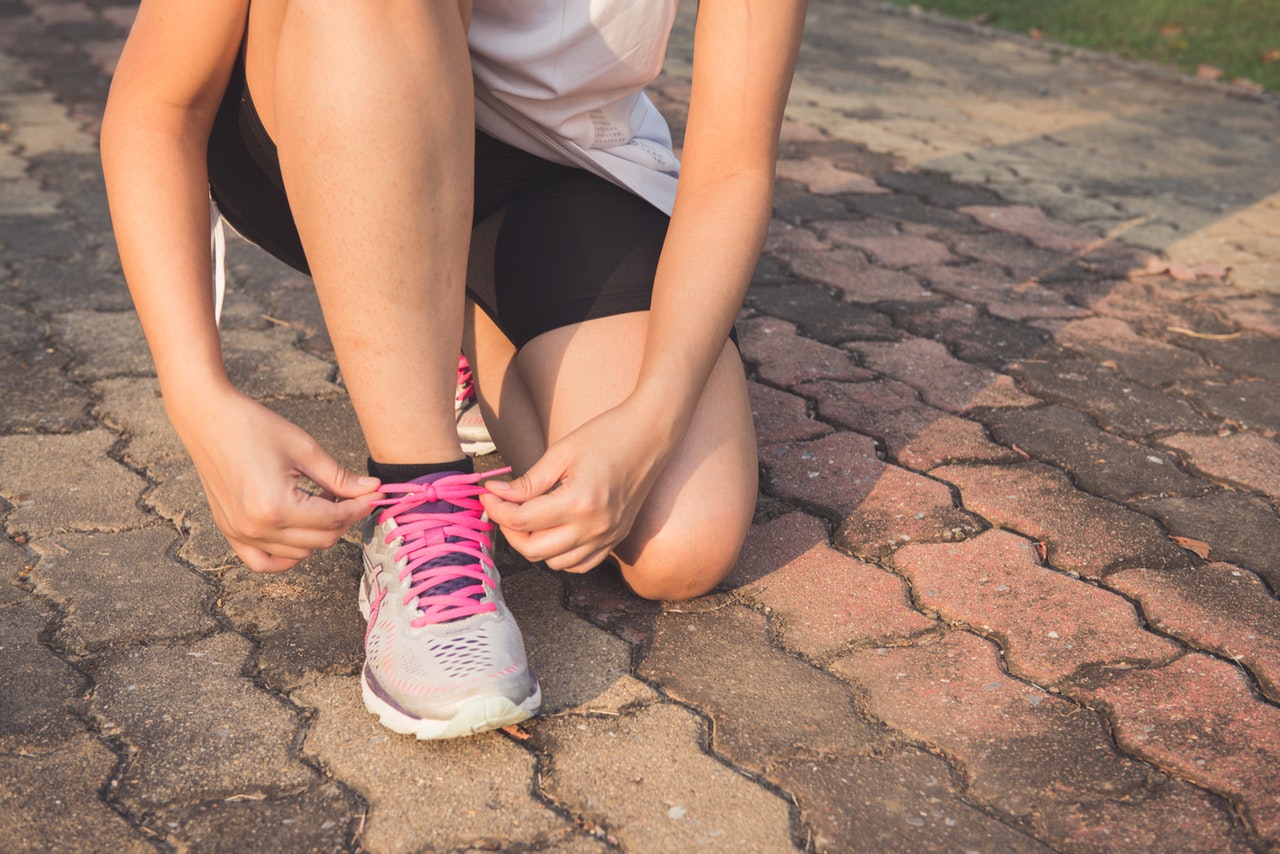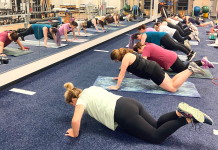 Running isn’t rocket science. One foot in front of the other at a quick rate. Easy peasy. But, to run correctly and prevent injury? That’s the hard part. After coaching several couch to 5k running groups, I’ve picked up on the most common misconceptions and how to decrease your chance at injury.
Running isn’t rocket science. One foot in front of the other at a quick rate. Easy peasy. But, to run correctly and prevent injury? That’s the hard part. After coaching several couch to 5k running groups, I’ve picked up on the most common misconceptions and how to decrease your chance at injury.
Gear
Shoes
Proper running shoes are the first piece of the puzzle. If you only buy one piece of running gear, this is a must. I highly recommend going to a running store to be properly fitted. For example, Fleet Feet will properly measure your foot, evaluate you walking, and recommend the best shoe for your needs. You may hear the words “over pronate,” “over supinate,” or “neutral gait.” There are shoes made specifically for each of those gaits. Keep in mind, cheaper isn’t better in the world of running shoe technology, so be prepared to spend $100+ on shoes. Proper running shoes are worth avoiding pricey medical bills. {I recommend buying running shoes at Fleet Feet because they have an amazing return policy- you can return shoes AFTER wearing them.}
Arch Inserts
These are optional, but I swear by mine. Arch inserts help support your arch, or lack thereof, and can help prevent shin splints and offer additional support, if needed. These do not include cheap, flimsy inserts that don’t offer proper support. I recommend Superfeet or Powerstep inserts.
Sports Bra
Ladies, this is a necessity if you are “blessed” up top. Running stores will typically offer bra fittings as well. Moving Comfort and Enell offer great options for the best support. Smaller chested ladies, you need support too! Don’t skimp on a properly fitting bra. One last piece of advice: if the sports bra is over a year old, toss it. Wash wear and use takes its toll on the supportive fabric.
Running apparel
This is optional, but there are definitely great benefits to dri-fit socks and apparel. Again, running stores offer the best selection of awesome running socks {my personal favorite is Balega Hidden Comfort socks}.
GPS watches are great tools to use, but if you choose to run with your phone, you can download apps to track your time, distance, and pace such as Mapmyrun among others.
Running
Now that you have the gear, let’s discuss running. Slow and steady wins the race. Okay, maybe not every time, but it will definitely help the beginner runner avoid injury. Many couch to 5k running programs start off with run/walk intervals, for example you run one minute, walk two minutes, 10 times. I suggest running for time, not distance in the beginning. The distance will come, but running can be overwhelming if you only focus on the distance.
Oftentimes local running stores offer couch to 5k running programs, so if you want the support and fun group atmosphere, check around! {Fleet Feet Knoxville has a program starting the last week of February!} These are great for beginners because they offer proper running form, breathing techniques, and keep you motivated. You can even find other runners around your pace and continue running with them after the program ends.

If a running program doesn’t work with your budget or schedule, there are plenty of couch to 5k apps you can download to use.
Common Injuries
The most common injury in beginner runners is shin splints. If you experience shin splints, re-evaluate your shoes and inserts. Shin splints are an overuse injury in the lower leg. Ice and take a few days off. When you start back, start slowly.
Plantar fasciitis is another common pain beginner runners face. Arch inserts can usually remedy this problem.
{When in doubt, see a doctor for appropriate medical care.}
Race Day
Sign up for a race! That gives you a goal and a deadline. A 5k is a 3.1 mile race. The atmosphere will get your adrenaline going and you’ll have so much fun reaching your goal!



















